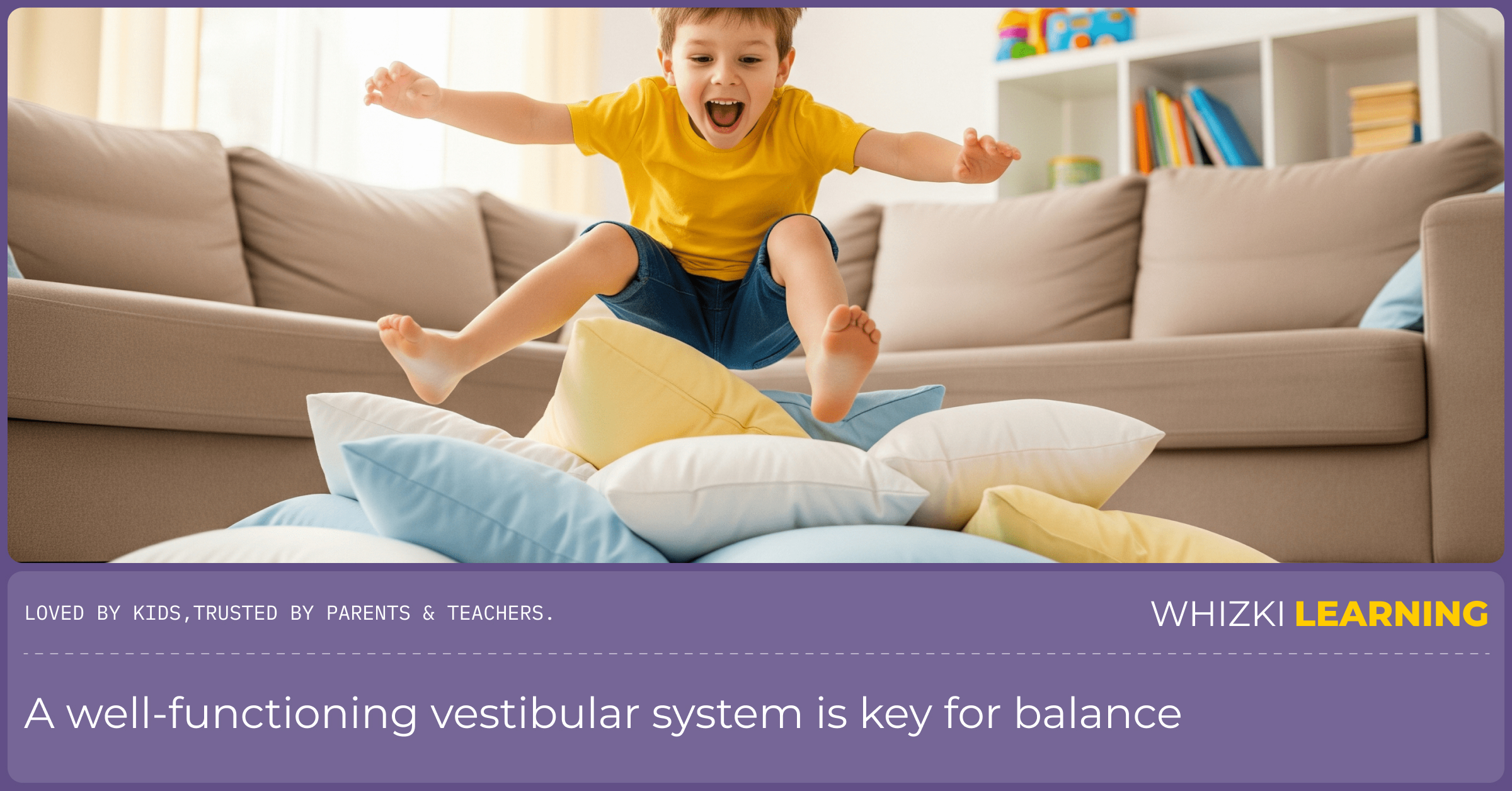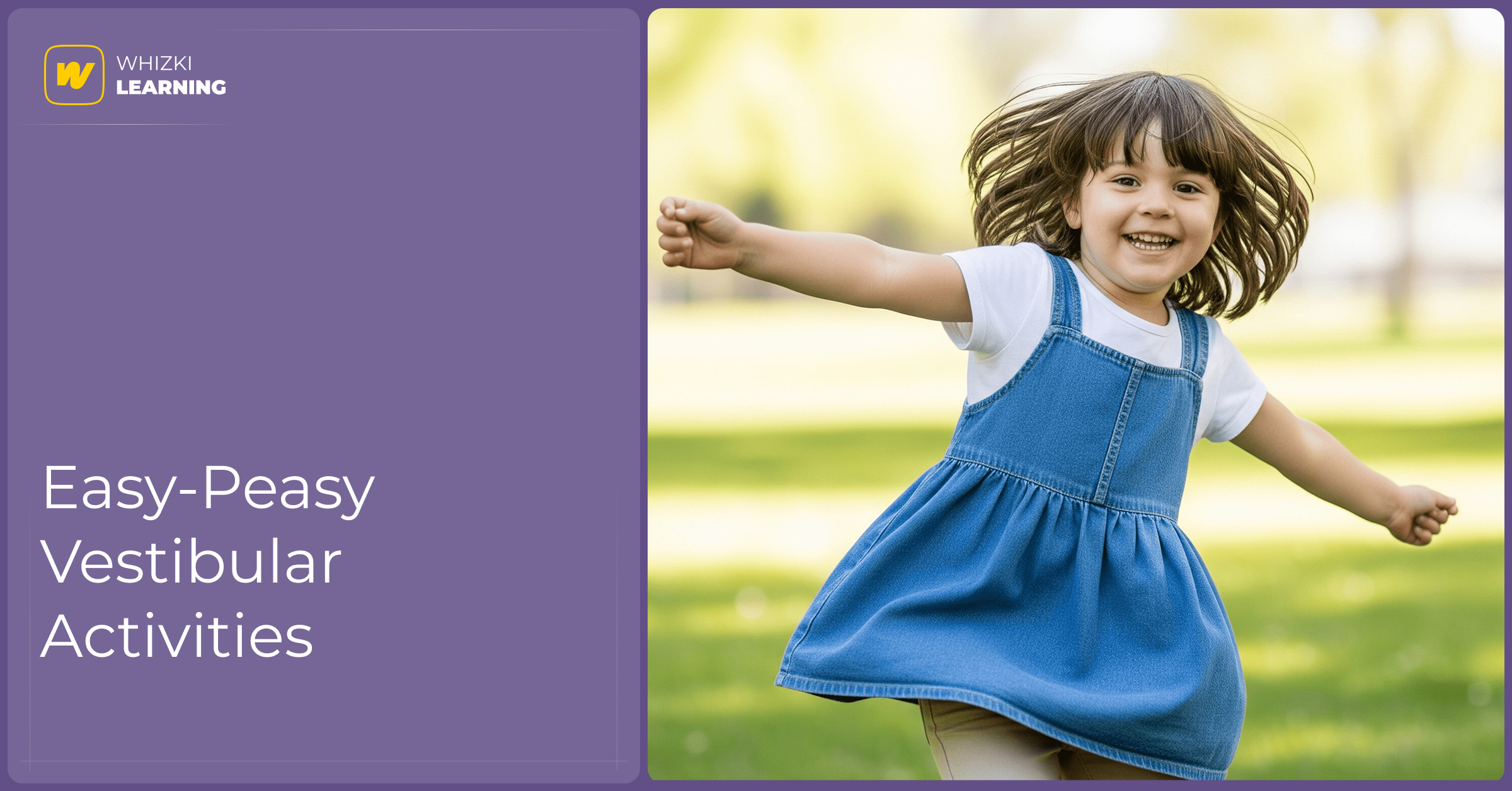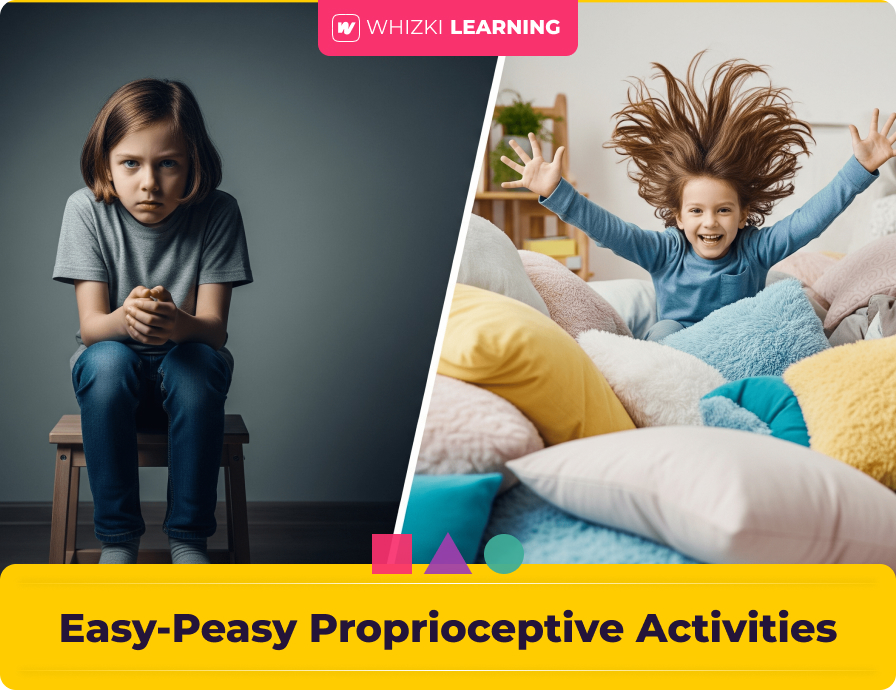Hey there, parents! Let’s get real for a sec. We’ve all had that moment at the playground when our kid goes a little wild-bumping into things, spinning until they’re dizzy, or just generally being a human wrecking ball. Our first instinct is to say, “Slow down!” or “Be careful!” But what if that 'wild behavior is exactly what their brain needs? At Whizki Learning, we know that the most powerful learning isn’t quiet and still; it's loud, messy, and full of motion. The best kind of screen-free learning often looks like pure chaos.
This guide is your permission slip to embrace the chaos. We’re going to talk about two big, fancy words-proprioception and vestibular sense-and I’ll break down why they’re the secret sauce for everything from better focus to improved coordination. Let's get moving!
Chapter 1: The 'Where Am I?' Sense (Proprioception)
Proprioception is your body’s sense of where it is in space. It’s what tells you how to walk without looking at your feet and how much force you need to lift a heavy box. For kids, this sense is what helps them understand how to control their bodies. When they're jumping, pushing, and crashing into things, they're literally getting a 'body map' of themselves. A well-developed proprioceptive sense helps with everything from handwriting to sitting still in a chair. It’s the foundation for so many of our fine motor skills.
Easy-Peasy Proprioceptive Activities:
The 'Heavy Work' Challenge: Give your child a job that involves pushing or pulling. This could be helping you push a shopping cart, carrying a small basket of laundry, or pushing a toy-filled wagon. The resistance is great for their sense of body awareness.
The Human Sandwich: Kids love this one. Have them lie down on the floor, and you can gently press on their body with a pillow or a blanket. The deep pressure is incredibly calming and great for their proprioception.
Pillow Crashes: Set up a big pile of pillows and let your child jump and crash into them. This is a safe and fun way for them to get the intense input their body craves.

Chapter 2: The 'Am I Spinning?' Sense (Vestibular)
Your vestibular sense is all about balance and motion. It’s located in your inner ear and tells your brain whether you’re upright, upside down, or moving fast or slow. A well-functioning vestibular system is key for balance, coordination, and even focus. When a child spins, hangs upside down, or sways back and forth, they are training this system. This is a huge part of toddler activities and is so important for their overall physical development. It's the same principle we discussed in our article about music and movement.
Easy-Peasy Vestibular Activities:
Playground Swings: A simple swing is one of the best tools for vestibular input. The back-and-forth motion is both calming and stimulating.
Spinning and Twirling: Encourage your child to spin in circles (safely!) and then stop to feel the dizziness. This is a fun way for them to learn about how their body reacts to motion.
Balancing Acts: Walk along a curb, a line on the sidewalk, or a low-lying log in the park. This helps them practice their balance in a fun, low-risk way.

Chapter 3: The Link to Focus and Learning
It might seem backwards, but a child who is constantly moving might actually be trying to help themselves focus! Many kids with a poorly developed proprioceptive or vestibular system will seek out movement to help organize their brain. By giving them structured opportunities for this kind of play, you're helping them get the input they need so they can then sit down and focus on a puzzle or a "skill-building worksheet".
So, the next time you see your child jumping on the bed or running in circles, don’t just see a kid being wild. See a brilliant little scientist at work, training their brain and body to work together. Our mission at Whizki Learning is to support this natural process. Our educational workbooks are the perfect companion to these big body activities, providing a calm, focused way to practice the skills they’re building through movement. Ready to jump in? Check out our full collection of educational workbooks and activities today!






